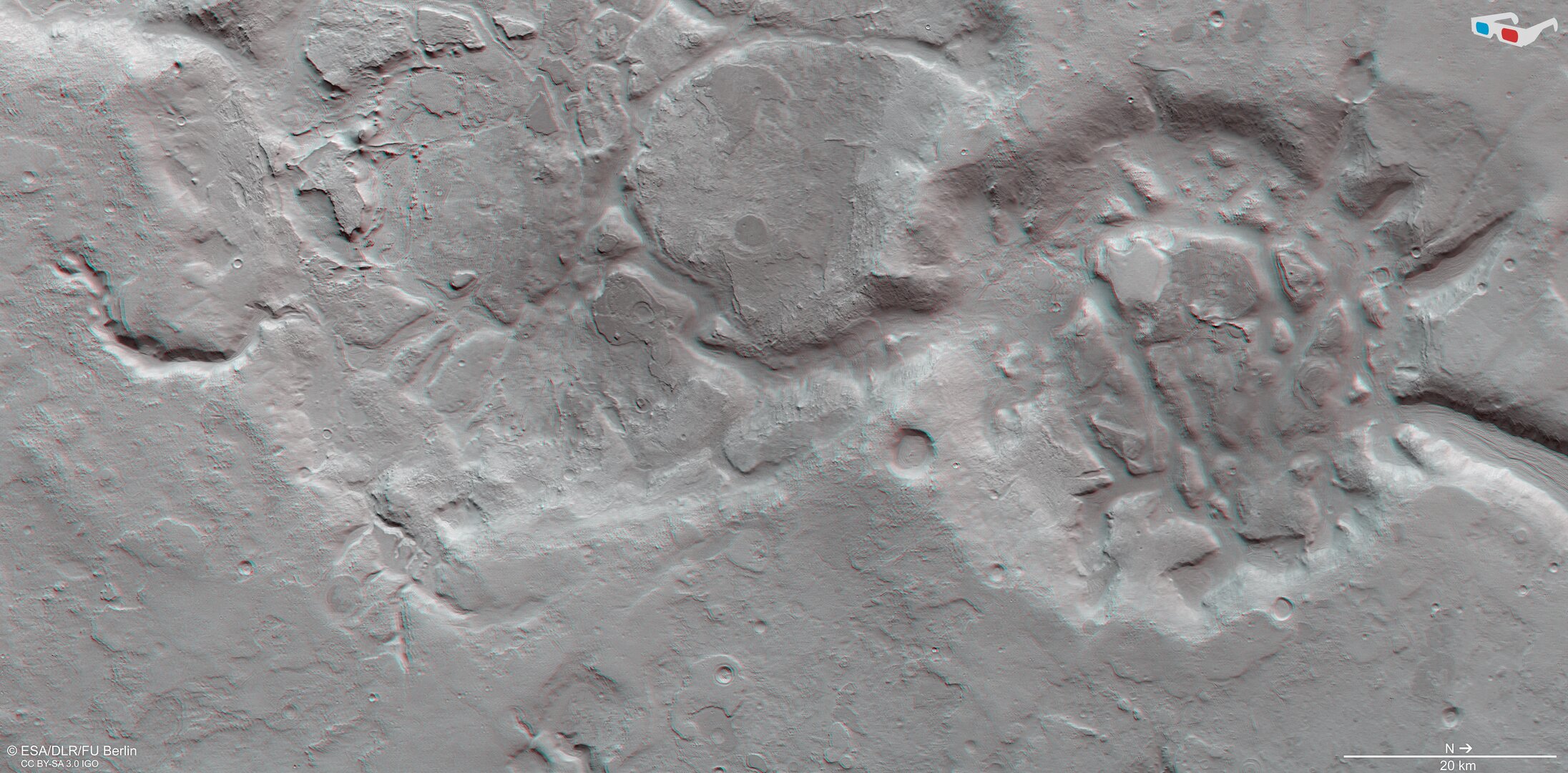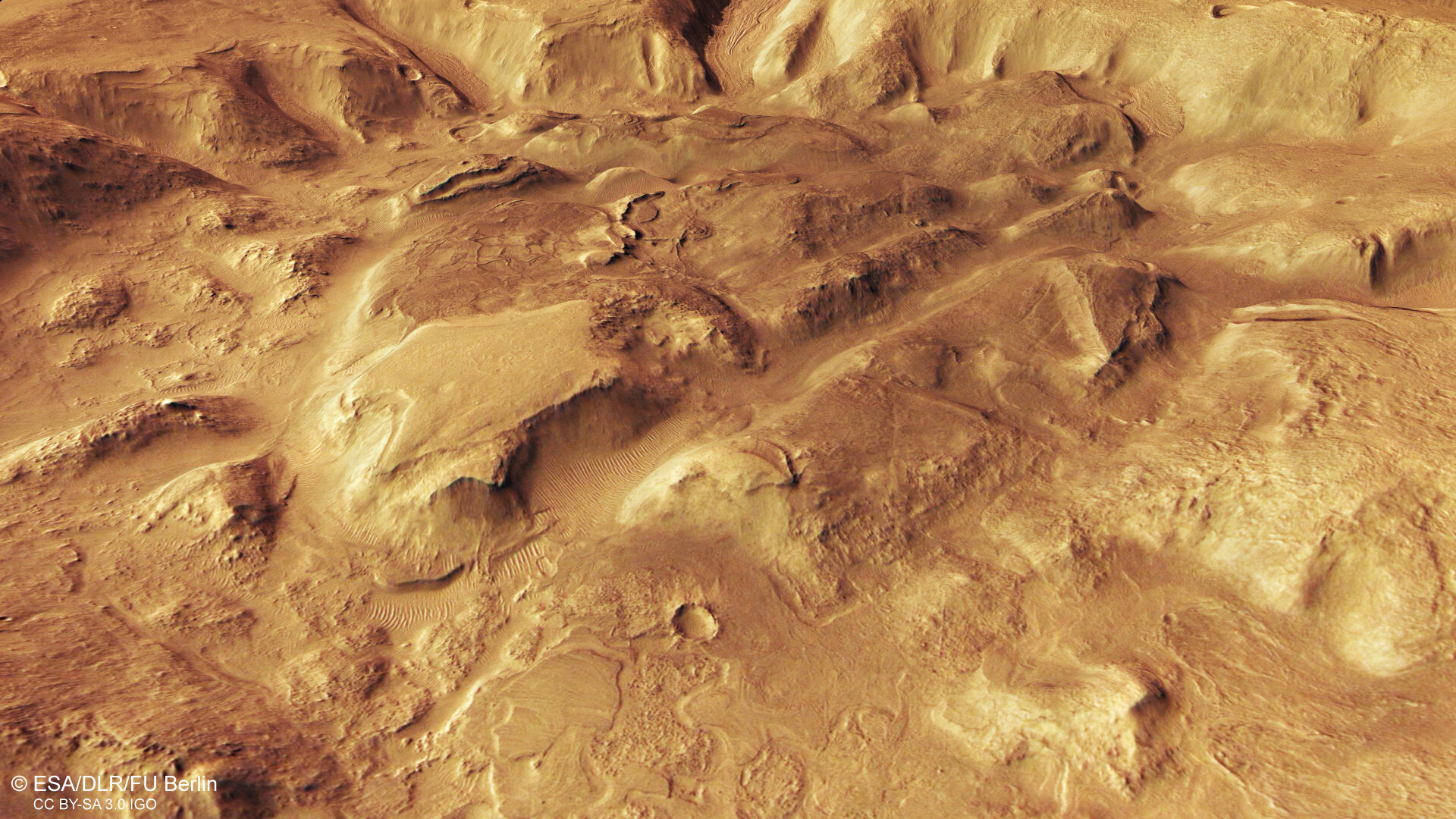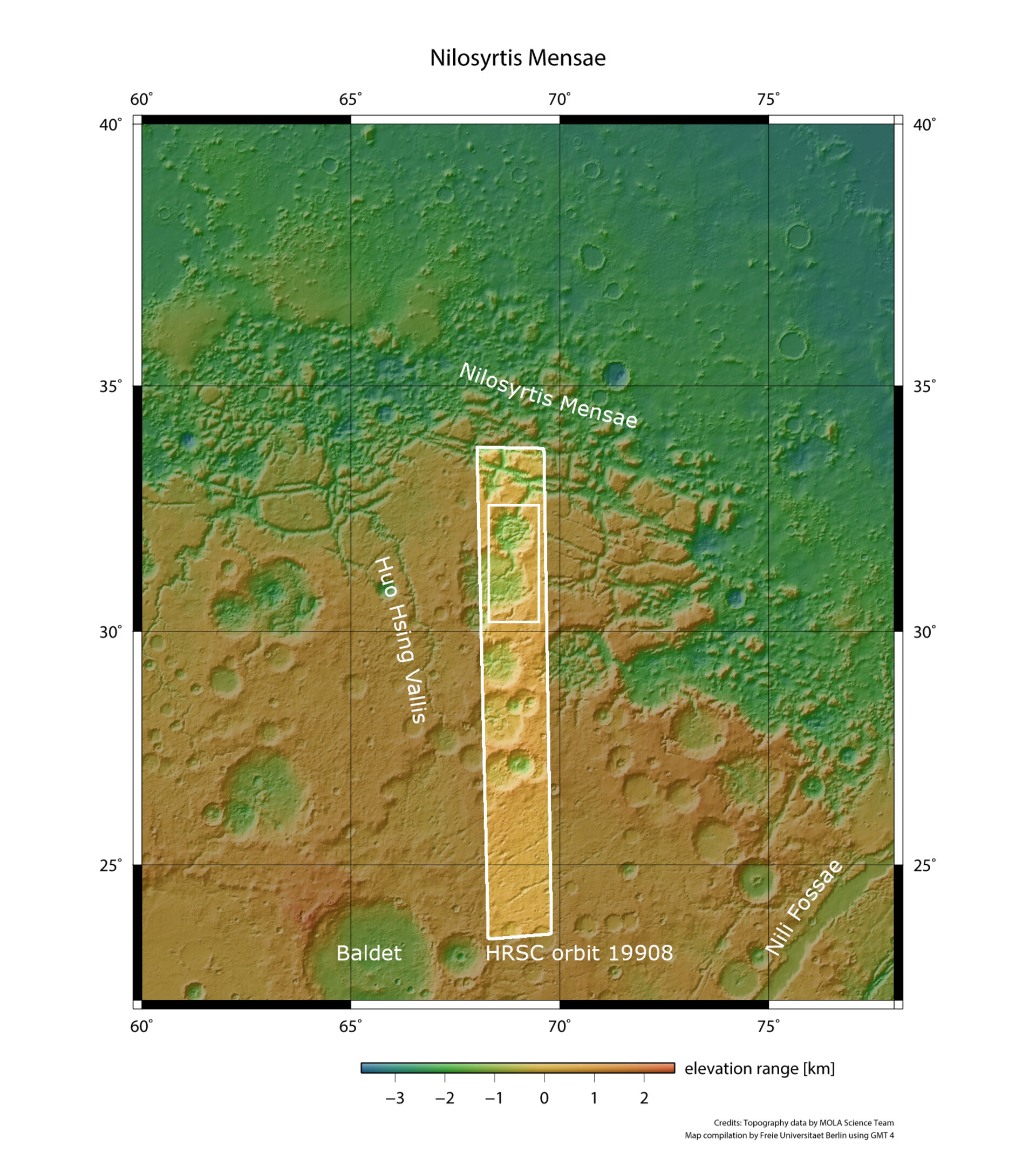Global S&T Development Trend Analysis Platform of Resources and Environment
| Two halves of a whole | |
| admin | |
| 2020-02-13 | |
| 发布年 | 2020 |
| 语种 | 英语 |
| 国家 | 欧洲 |
| 领域 | 地球科学 |
| 正文(英文) | Mars is very much a world of two halves, as this new image from ESA’s Mars Express highlights, showing where these dramatically different regions come together as one. The morphology and characteristics of the martian surface differ significantly depending on location. The northern hemisphere of Mars is flat, smooth and, in places, sits a few kilometres lower than the southern. The southern hemisphere, meanwhile, is heavily cratered, and peppered with pockets of past volcanic activity. 
A transition zone known as ‘dichotomy boundary’ separates the northern lowlands and southern highlands. Large parts of this region are filled with something scientists call fretted terrain: blocky, broken-up, fragmented swathes of terrain where the rough, pockmarked martian south gives way to the smoother north. This new image from the Mars Express High Resolution Stereo Camera (HRSC) shows exactly that: a region of fretted terrain named Nilosyrtis Mensae. 
Nilosyrtis Mensae has a labyrinthian appearance, with numerous channels and valleys carving through the terrain. Water, wind and ice been strongly affecting this region, dissecting and eroding the terrain, along with changes in martian geology: valleys have formed over time and sliced across the region, and once-defined impact craters have slowly degraded, their walls and features gradually wearing away. The large crater to the right of the frame is an example of this degradation: it has a smooth, rounded appearance, with gently sloping walls, softened edges, and a flat bottom that has been widened and filled by sedimentary material over time. This worn-away morphology reflects both the crater’s advanced age, and the levels of erosion it has undergone since it formed. 
Such erosion processes also created rounded hills and isolated flat-topped hills, or ‘mesas’, that are visible within the crater and across the region more widely. These stand apart from their surroundings as isolated features, and contribute to the blocky, fractured appearance of fretted terrain. Scientists are interested in Nilosyrtis Mensae not only for its location in this intriguing transition zone between north and south, but also for the secrets it could hold about the history of water on Mars. 
Observations of this region by missions such as Mars Express have revealed ridges, grooves and other surface textures indicative of flowing material – most likely ice. The climate and atmosphere of ancient Mars allowed ice and snow to accumulate and move around across the planet’s surface. Ice is thought to have flowed through the various valleys and across the plateaus in this region, in the form of slow-moving glaciers that swept up debris as they travelled. Such features would be similar to rock glaciers here on Earth: either icy flows covered in layers of mud and sediment, or flowing mixtures of ice, mud, snow and rock interspersed with larger rocks and boulders. Studying and characterising the various processes at play across the surface of Mars is a key aim of Mars Express. Launched in 2003, the spacecraft has now been orbiting the Red Planet for over a decade and a half. Meanwhile, the ESA-Roscosmos ExoMars Trace Gas Orbiter (TGO) joined in 2016, soon to be joined by the ExoMars Rosalind Franklin rover and its accompanying surface science platform, scheduled for launch in July. |
| URL | 查看原文 |
| 来源平台 | European Space Agency |
| 文献类型 | 新闻 |
| 条目标识符 | http://119.78.100.173/C666/handle/2XK7JSWQ/227688 |
| 专题 | 地球科学 |
| 推荐引用方式 GB/T 7714 | admin. Two halves of a whole. 2020. |
| 条目包含的文件 | 条目无相关文件。 | |||||
| 个性服务 |
| 推荐该条目 |
| 保存到收藏夹 |
| 查看访问统计 |
| 导出为Endnote文件 |
| 谷歌学术 |
| 谷歌学术中相似的文章 |
| [admin]的文章 |
| 百度学术 |
| 百度学术中相似的文章 |
| [admin]的文章 |
| 必应学术 |
| 必应学术中相似的文章 |
| [admin]的文章 |
| 相关权益政策 |
| 暂无数据 |
| 收藏/分享 |
除非特别说明,本系统中所有内容都受版权保护,并保留所有权利。
修改评论